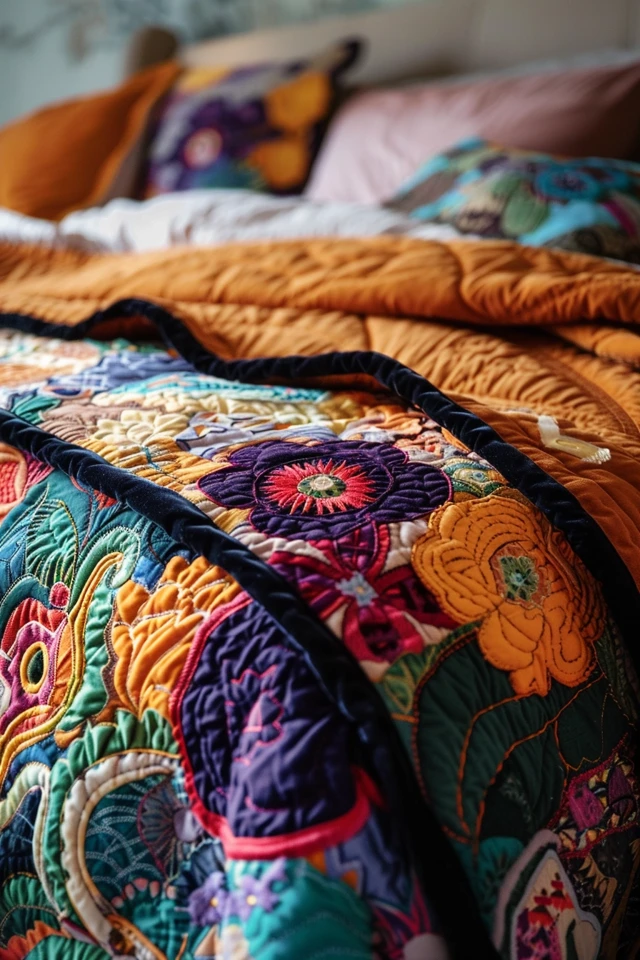Hello, I’m here to share some valuable tips on how to wash a quilt without any bleeding or damage to the fabric. Washing quilts can be a delicate process, especially when it comes to preserving their vibrant colors and fabric integrity. But fear not, because I’ve got you covered with safe cleaning methods that will help you maintain the beauty and quality of your quilt.
When it comes to washing a quilt, prevention is key. By taking certain precautions, you can significantly reduce the risk of fabric bleeding. Let’s dive into the details.
Preventing Fabric Bleeding: Quilt Care Tips
When it comes to washing a quilt, preventing fabric bleeding is a top priority. Nobody wants their vibrant colors to turn into a splotchy mess! Luckily, there are some quilt care tips you can follow to avoid this common issue.
Prewash Your Fabrics
One of the best ways to prevent bleeding is by prewashing your fabrics before quilting. This is especially important for deep-colored fabrics like navy, red, and purple, as they tend to be more prone to bleeding. By giving them a good wash beforehand, you can remove any excess dye and minimize the risk of bleeding during future washes.
Use Color Catchers
Color catchers are a quilt’s best friend when it comes to preventing bleeding. These nifty little sheets work by absorbing any bleeding dyes, preventing them from staining other fabrics in the wash. Simply toss a color catcher into the washing machine with your quilt, and it will help keep the colors vibrant and prevent bleeding from ruining your masterpiece.

Do a Swatch Test
Before incorporating different fabrics into your quilt, it’s essential to do a swatch test to check for bleeding. Cut a small piece of each fabric you plan to use, then soak them in water. If any of the fabrics release dye into the water, it’s a warning sign that they may bleed during washing. By identifying these problematic fabrics early on, you can make adjustments to avoid potential bleeding issues later.
“Preventing fabric bleeding is crucial for maintaining the integrity and beauty of your quilt. By taking these quilt care tips into consideration, you can ensure that your colors stay vibrant and your quilt remains a stunning piece of art.
By following these best practices for washing quilts, you can keep your colors intact and prevent fabric bleeding. Remember to prewash your fabrics, use color catchers, and perform swatch tests to identify potential bleeders. With proper quilt care, you can enjoy your masterpiece for years to come!
Gentle Washing Methods: Avoiding Color Run in Quilts
When it comes to washing your quilt, taking gentle washing methods can help you avoid color run and preserve the vibrant colors of your quilt. By following these tips, you can ensure that your quilt stays beautiful for years to come.
Hand Washing
One recommended method for washing quilts is to hand wash them in a bathtub or sink using cold water and a gentle detergent. This approach allows for more control over the washing process, minimizing the risk of fabric bleeding. Gently swish the quilt in the water, taking care not to rub or scrub it vigorously. This will help preserve the colors and prevent color run.

Machine Washing
If you prefer to use a washing machine, opt for the gentle cycle and cold water setting. Use a color-free and fragrance-free detergent specifically designed for delicate fabrics. This will minimize the potential for color run and ensure that your quilt comes out clean without any damage to the colors or fabric. Adding color catchers to the wash can further protect against bleeding, as these sheets absorb any loose dyes that may be released during the washing process.
Drying
After washing your quilt, it is important to dry it properly to prevent shrinking and maintain its integrity. The recommended method is to air dry the quilt, either by laying it flat or hanging it up. If you prefer to use a dryer, choose a low heat setting to minimize the risk of shrinkage. Placing clean, dry towels in the dryer with the quilt can help absorb moisture and protect it during the drying process.
Remember, the key is to be gentle with your quilt throughout the washing and drying process. Taking these precautions will help protect the colors and fabric, ensuring that your quilt remains a beautiful and cherished piece for years to come.

Conclusion
When it comes to washing delicate quilts, preventing fabric bleeding and following the best practices for quilt washing are essential. By taking the time to prewash fabrics, test for bleeding, and use gentle washing methods, you can preserve the vibrant colors and quality of your quilt.
Prewashing your fabrics before quilting is a crucial step in preventing bleeding. This is especially important for fabrics that are prone to bleeding, such as deep colors like navy, red, and purple. Additionally, incorporating color catchers into the wash can help absorb any bleeding dyes and prevent them from staining other fabrics.
Using gentle washing methods is another key factor in avoiding color run and preserving the integrity of your quilt. Hand washing the quilt in a bathtub or sink with cold water and a gentle detergent allows for more control over the washing process. Alternatively, you can machine wash the quilt on a gentle cycle using cold water and a color-free, fragrance-free detergent. Adding color catchers or a product like Retayne can provide extra protection against bleeding.
Properly caring for your quilt through these best practices ensures its longevity and beauty. With these steps, you can confidently wash your quilt without worrying about bleeding or damage, and enjoy its vibrant colors for years to come.

